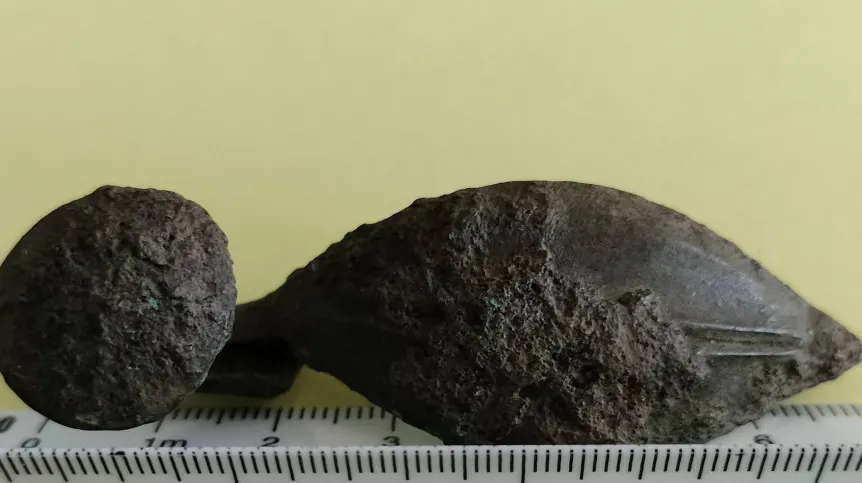
A detectorist searching close to the village of Śniatycze (Lublin Voivodeship) found a massive fibula, i.e. a bronze brooch from 2,500 years ago. This is the fifth discovery of its type in the country.
The fibula is 7 cm long and the maximum width of the bow is 2.4 cm. There is a visible decoration on the upper surface of the bow, at the end there is a sheath for a fastening needle and a convex bump above it. The decoration belonged to the people of the Lusatian culture and is dated to the final period of this culture, i.e. Hallstatt D (approx. 550-400 BCE).
'This find is of great importance to archaeologists. Both from a conservation point of view, because we have a new archaeological site and it may be a Lusatian culture cemetery, and from a research and cognitive point of view’, says Wiesław Koman, an archaeologist from the Zamość branch of the Provincial Office for the Protection of Monuments in Lublin.
According to the archaeologist, fibulae of this type are very rare and occur only in burial places of the Lusatian culture. 'This is the fifth fibula of this type found in Poland', Koman says. So far, archaeologists have found three fibulae in the Lusatian cemetery in Kietrz (Opole voivodeship), and the fourth one at the Kraków-Pleszów site (Lesser Poland Voivodeship).
The detectorist who made the latest discovery also found an early medieval flail head and a few centuries younger axe about 200-300 meters away.
Scientists date the flail head, an early medieval weapon, to the 11th-13th century. The object has a rounded body, approx. 7 cm long and approx. 2.7 cm thick, and a large hole for attaching a rope or strap. There are visible signs of damage on its surface.
The iron battle axe is dated to the 13th-15th century. The weapon is 15 cm long, has a slightly arched blade - up to 6.7 cm - and a head measuring 3 by 2.5 cm. Scientists assessed the condition of the axe as very good.
Employees of the Zamość branch of the Provincial Office for the Protection of Monuments are planning to inspect the discovery site and the monuments will soon be transferred to the Zamość Museum.
This is yet another find from the Lusatian culture period in the area of operation of the branch. Last year in Czernięcin Poduchowny near Biłgoraj, a detectorist found bronze decorations from 2,500 years ago. The 13 discovered artefacts included pins for attaching to clothes, shin guards and bracelets.
The community described by scientists as the Lusatian culture lived in the Vistula and Oder basins, as well as in the areas of Saxony, Brandenburg, northern Bohemia and Lusatia. Its members were mainly engaged in farming and breeding cattle, sheep, pigs and goats. (PAP)
PAP - Science in Poland, Piotr Nowak
pin/ miś/ kap/
tr. RL













